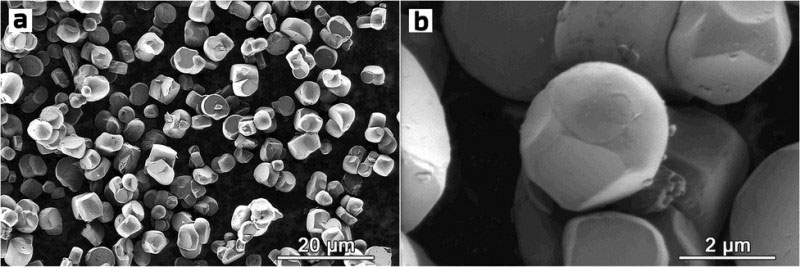Researchers at Skolkovo Institute of Science and Technology (Skoltech) have developed an improved cathode material for lithium-ion batteries powering electric vehicles. The material is a familiar nickel-rich layered transition metal oxide but with an altered microstructure that packs more energy per unit volume.
Thanks to its ultra-high energy density, the new material will make the cathodes and the batteries themselves more compact, which means an electric car with a battery of the same size will be able to travel more kilometers on a single charge. Scientists are hopeful that further experiments can boost the performance even further.
In currently used materials, some of the cobalt atoms are replaced by nickel and manganese. These materials are known by technical names such as NMC811, where the numbers reflect the ratio between the three elements in the chemical formula. Without changing their chemical composition, Skoltech researchers improved NMC811 and its cousin NMC622 by tweaking the materials’ microstructural organization.

Conventional NMCs are powered polycrystalline materials, meaning that each secondary particle is made up of randomly oriented grains. The crystal structure within any given grain is nearly flawless, but since no two grains fit perfectly together, some empty spaces inevitably arise at grain boundaries. The single-crystal counterparts of polycrystalline NMCs are just what the name says – each powder particle is basically one large grain with no wasted spaces in it. These single crystals are usually octahedron-shaped.
“Our material is a single-crystal NMC with spherical particles, combining the best of both worlds as far as maximizing density goes. Unlike polycrystals, the powder particles don’t have an internal structure, so there are no wasted spaces at grain boundaries. But on top of that, you can also pack more spherically shaped single crystals into the same limited volume than octahedron-shaped ones, so you get more density on that account, too,” study co-author Skoltech Research Scientist Aleksandra Savina said.
In addition to the denser packing, the spherical shape of the crystals reduces the area of contact with the electrolyte, minimizing unwanted interactions that, over time, cause cathode degradation due to crack formation in the particles of conventional NMCs. This should prolong the operating life of the cathode and battery on the whole. To alter the layered oxide morphology, Skoltech researchers tweaked the synthesis procedure, which relies on the so-called flux method.
Researchers say the new cathode material offers an increase in energy density by up to 25%. They also hope that even more energy can be packed into the same volume through further experimentation with the particle size, combining smaller and larger spheres for even denser packing. The team will also pursue layered transition metal oxides that would replace even more cobalt and manganese atoms with nickel, further enhancing energy storage capacity.
“Cathode materials are an important bottleneck as far as electric vehicle batteries are concerned,” principal investigator Professor Artem Abakumov from Skoltech Energy commented. “The cathodes in batteries powering electric cars tend to use layered transition metal oxides, including nickel-rich ones. We improved two commonly used materials of this kind, achieving a 10%-25% increase in energy density. This translates into smaller cathodes, more compact batteries, and, therefore, greater energy storage capacity for the same volume. As an added bonus, the material is slower to deteriorate.”
Journal reference:
- Ivan A. Moiseev, Aleksandra A. Savina, Alina D. Pavlova, Tatiana A. Abakumova, Vladislav S. Gorshkov, Egor M. Pazhetnov, and Artem M. Abakumov. Single crystal Ni-rich NMC cathode materials for lithium-ion batteries with ultra-high volumetric energy density. Energy Advances, 2022. DOI: 10.1039/D2YA00211F
Novel cathode material for EV batteries packs 25% more energy
Source: Tambay News

0 Comments